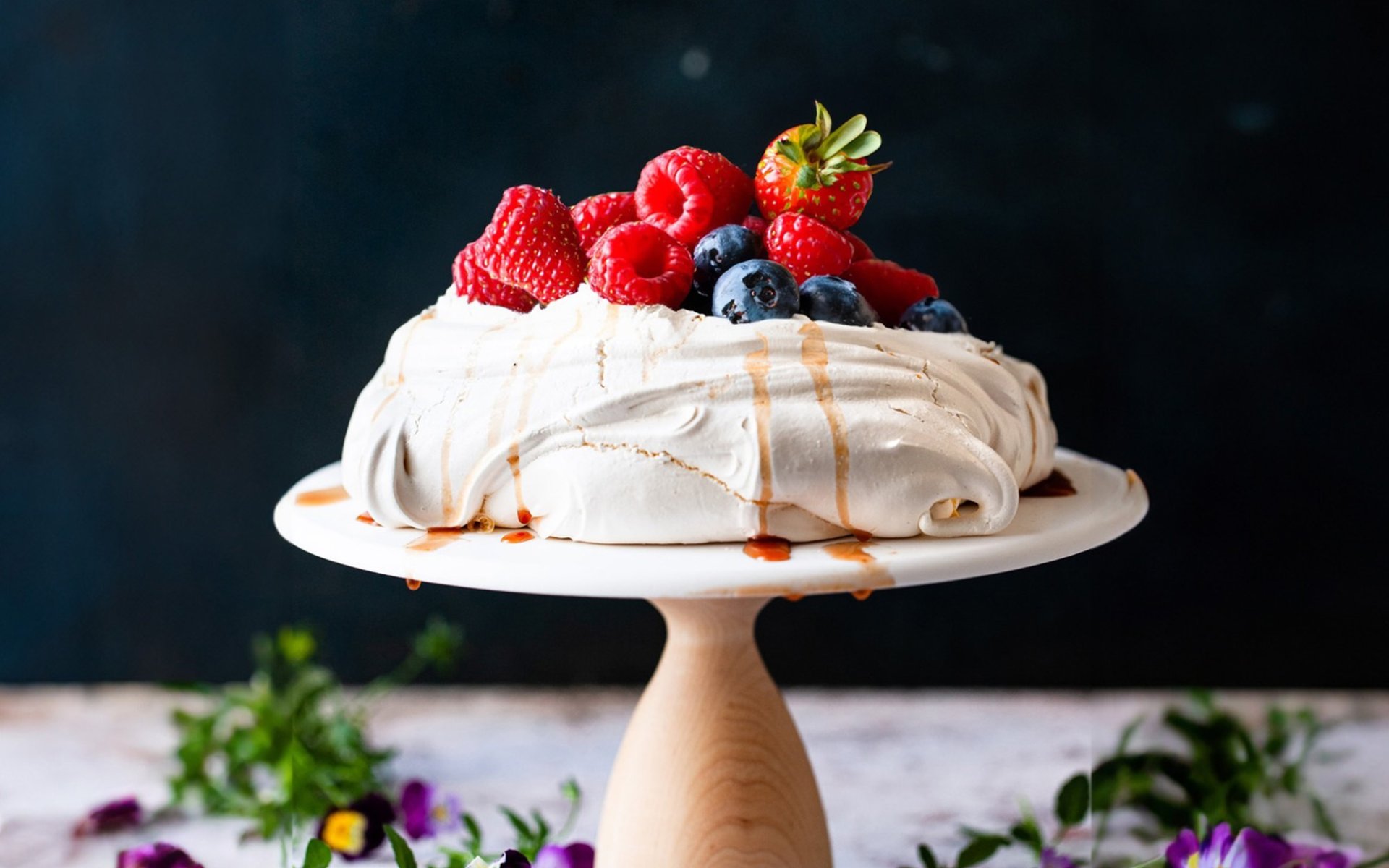Pavlova

Pavlova is a dessert that has captured the palates of people worldwide with its sweet taste and beautiful, art-like presentation. The story of this delicate dessert is said to have originated in Australia and New Zealand in the 1920s, a period when Anna Pavlova, the renowned Russian ballerina, embarked on a global tour that included stops in both Australia and New Zealand.
A Disputed Origin: Tales from Two Nations
Legend has it that Pavlova was created in honor of the graceful ballerina. However, the history of Pavlova remains a subject of ongoing debate between Australia and New Zealand, with both countries claiming to be its true birthplace.
Australians generally believe that Pavlova was first created by Chef Bert Sachse at the Esplanade Hotel in Perth. Meanwhile, New Zealanders contend that it was created by Chef Richard Davis from the Wellington Hotel. Although there is still no definitive evidence to clarify which country invented it, it is widely agreed that Pavlova was created as a tribute to the celebrated Russian ballerina, Anna Pavlova.
The Harmony of Taste and Art: Inspired by Ballet's Graceful Movements
Despite the ongoing dispute over its origins, the sweet taste and unique texture of Pavlova have undoubtedly captivated countless people. The cloud-like softness of Pavlova was inspired by Anna Pavlova's fluid, wind-like movements and elegant presence as she danced gracefully on stage.
Chefs crafted this cake from meringue, creating an astonishing crispy exterior and a soft, yielding interior. It is typically adorned with a variety of berries such as strawberries, blueberries, blackberries, raspberries, and many others, adding vibrant colors and a refreshing zest to the dessert. This sweet creation was then named after her, in her honor.
The Allure of Pavlova: Hidden Beauty and Symbolism
At first glance, the external appearance of Pavlova often resembles the full, voluminous shape of a flowing ballet tutu. The fresh fruits used to decorate it can be seen as symbolizing Anna's vibrant charm and vivacity, captivating audiences and enchanting them with her artistic performances.
While Pavlova shares similar ingredients with traditional meringue recipes, what makes it truly special is its unique texture. The exterior boasts a crisp meringue shell, which, when bitten into, reveals a soft, sweet, marshmallow-like meringue interior. This delightful contrast in textures is perfectly balanced by the sweet and tart flavors of various fresh fruits, making Pavlova a popular choice for special occasions and festive celebrations.
The Evolution of Pavlova: From Classic to Culinary Innovation
Over time, Pavlova's popularity has spread globally, leading to its evolution and adaptation to diverse culinary tastes and preferences. Beyond its distinctive flavor, the delicate and elegant appearance of Pavlova makes it an attractive centerpiece on dessert tables at various celebrations worldwide.
While the classic Pavlova recipe remains a beloved favorite, modern chefs have elevated this dessert further by experimenting with new flavors and presentations. For instance, in tropical regions, ingredients like mango and passion fruit are often incorporated, adding a refreshing and exotic twist. Pavlova has truly become a canvas for culinary creativity, constantly impressing and delighting everyone who experiences it.


